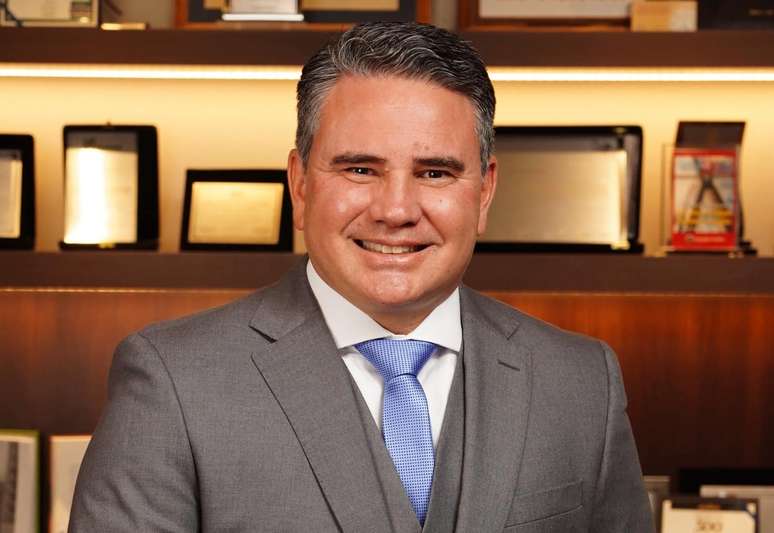Composed of 11 judges, the Court avoids dealing with high-profile cases when it is not complete; The president has no deadline to appoint a replacement
SPECIAL FOR ESTADÃO – The retirement of Ricardo Lewandowski announced for next Tuesday, 11, will cause an unusual, but not unprecedented situation in the Federal Supreme Court (STF): the Court will work with ten judges, and not with 11 as foreseen by the Constitution. This is because, on the same day, President Luiz Inácio Lula da Silva leaves for a meeting with Chinese President Xi Jinping in Beijing, and will not name a replacement right away. Furthermore, the name will still have to be challenged by the federal Senate.
Lewandowski anticipated the date scheduled for the magistrate’s departure by a month: on May 11 he will turn 75, the age at which the retirement of a minister of the Supreme Court is mandatory. “I leave with the conviction that I have accomplished my mission. My office is practically zero in terms of processes,” the minister said last week. According to him, the early departure is due to academic and professional commitments.
During the campaign, Lula said he never nominated “a friend” to the Supreme Court. However, the name that emerges behind the scenes in Brasilia to take Lewandowski’s vacant position is that of Cristiano Zanin, 47, the president’s personal lawyer.
Below, understand what votes are like in the STF in the absence of a minister.
1. Does the Constitution admit ten judges to the Court?
YES. In general, the Supreme Court avoids ruling on cases of great repercussion when there is one judge short. “(In these cases), they can suspend the process and wait for the court to reassemble itself to get the 11 votes”, he explains Rubens Glézer, professor of Law at the FGV and coordinator of the Supreme Center of Pauta. Impoverished, the Court ends up operating under constant risk of equal judgment.
2. In case of equality in judgment, who decides?
In criminal matters, when there is a trial or an investigation, a draw always benefits the defendant. Glezer clarifies that, in these cases, the principle applies that, in case of doubt, the judgment must favor the defendant. In cases where there is an interpretation of the Constitution, ministers can start voting, but must wait for the arrival of the eleventh member to complete the analysis. However, the professor points out that a draw in this situation is very rare.
3. How long can the president make the appointment?
Lula could appoint two ministers to the Supreme Court this year due to the mandatory retirements of Ricardo Lewandowski and Rosa Weber, expected in October. According to the Constitution, the STF must be composed of 11 judges.
However, there is no regulation setting a deadline for the nomination to be made. Lula, therefore, would have a greater margin to decide on her nomination. “The Constitution doesn’t set a deadline for nominations to be made to fill a vacancy. It’s a political perception of the president that makes him make a decision quickly or slowly,” Glezer assesses.
The family feud appears in the campaign for the vacant post of the supreme minister and creates a dead end for Lula
Cristiano Zanin, Lula’s lawyer and quoted by the Stf, launches an ethical challenge to the president
Lula wants ministers opposed to Moro in the STF; PTs and social groups advocate for women in the second wave
5. Who is being named to fill the vacant post in the STF?
Lewandowski said he has not discussed the names of his successor with Lula, because it is the president’s exclusive decision. For Lewandowski, in addition to the constitutional requirements to hold the position (at least 35 years of age, considerable legal knowledge and an unblemished reputation), the new minister must have courage. “I think my successor will have to be faithful to the constitution, to fundamental rights and guarantees, but he will have to be, above all, courageous in the face of the enormous pressures that a minister of the Federal Supreme Court faces in his daily life”.
Lula has not yet confirmed the name of who will be next to fill Lewandowski’s chair. However, behind the scenes, the name of Cristiano Zanin is pointed out as the main favorite to fill the post of magistrate. In a recent statement, Lula said the attorney was “an extraordinary revelation in the legal field.”
Former Secretary General of TSE and STF during Lewandowski’s tenure, the lawyer Manuel Carlos de Almeida Neto he is also one of those cited to take the vacant post. Zanin and Manoel Carlos would be the two ‘finalists’ for the vacant post – as demonstrated StadiumLula has already received more than 15 name suggestions to fill the STF chairs.
Lula, on the other hand, was requested by social groups for the post to be filled by a black woman. The president, however, told allies that the gender of the candidate will not be decisive for the choice.
6. After the appointment, what is the procedure for the new minister to assume office in the STF?
To be nominated, the chosen one will need the votes of 41 of the 81 senators. Voting is secret.
7. Have there ever been cases where the STF has worked for a long time with ten ministers?
In 2021, the then president of the Constitution and Justice Commission of the Senate (CCJ), Davi Alcolumbre, “held” for more than four months the sabbath of André Mendonça, nominated by President Jair Bolsonaro to fill a seat on the Federal Supreme Court after retirement from Marcus Aurelius Mello. In a political dispute with Bolsonaro, the CCJ president held off on the nomination for as long as possible. He decided to make a strategic retreat only after losing support even among the allies and having suffered criticism and having seen the delay classified as an abuse of power.
8. Can the formation of the STF change?
In 2022, during the election campaign, President Jair Bolsonaro did not rule out the possibility, if re-elected, of increasing the number of STF ministers. This measure would not be unprecedented in the Brazilian political scenario. During the military dictatorship (1964-1985), with the Institutional Act n. 02 (AI-2), of 27 October 1965, the number of Judges of the Court increased from 11 to 16, an increase maintained by the Constitution of 24 January since 1967.
Last month, President Lula said he intends to discuss amending the constitution to determine the term of office of Federal Supreme Court ministers. Today, to be nominated by the president and approved by the Senate, a STF minister must be over 35 and under 70, with substantial legal knowledge and an unblemished reputation. Mandatory retirement occurs at age 75.
Under discussion in Congress and the Executive, the adoption of a mandate for judges is viewed with reticence by jurists and former members of the country’s highest court. The fear is that this will generate more turnover and accentuate politicization in court.
Source: Terra
Rose James is a Gossipify movie and series reviewer known for her in-depth analysis and unique perspective on the latest releases. With a background in film studies, she provides engaging and informative reviews, and keeps readers up to date with industry trends and emerging talents.






